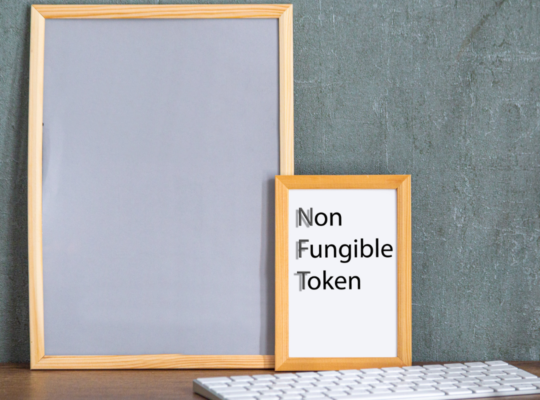
Gold has held a special place in Indian households for centuries. As of September 2024, it’s estimated that Indian households possess between 23,537 and 25,537 tonnes of gold, valued between ₹178 lakh crore ($2.11 trillion) and ₹193 lakh crore ($2.29 trillion). This massive gold holding represents about 15% to 20% of India’s total household wealth. It’s no surprise, then, that gold jewellery continues to play an important cultural and economic role.
For many households, upgrading to new gold jewellery often involves exchanging old pieces. This process may seem straightforward, but it can be confusing if you’re unfamiliar with the steps involved, the testing methods for gold purity, and the various charges associated with the exchange. In this blog post, we’ll break down the process of exchanging old jewellery for new, ensuring that you understand what to expect at every step and how to make the most of your gold.
Table of Contents
Understanding the Exchange Process
When you decide to exchange old gold jewellery, the process usually involves testing the purity of the gold, weighing the item, and then determining its value based on the current price of gold. This value is then adjusted against the price of the new jewellery you wish to purchase. Ideally, the exchange should be a simple and transparent transaction. However, in reality, there are several factors that complicate the process.
Step 1: Purity Testing
The first step in the exchange process is determining the purity of the gold in your old jewellery. Jewellers generally use two methods to test gold purity: the Karat metre and the X-ray fluorescence spectrometer.
- Karat Metre: This machine measures the purity of the outer layer of the jewellery. While this provides a quick estimate of the purity, it is not always accurate, especially if the ornament is made from a mix of alloys.
- Melting and Reassessing: After scanning the jewellery with the Karat metre, some jewellers melt the ornament to test its purity more thoroughly. By melting the piece, jewellers can get an accurate reading of the entire item, ensuring that the gold is homogeneous and pure throughout.

It’s important to note that the machines used to assess purity, such as the Karat metre, are not regulated by any government-authorized bodies, which can raise questions about their accuracy. Additionally, melting the gold allows jewellers to assess its exact gold content, but this may slightly reduce the weight of your jewellery due to the removal of dirt, impurities, or colouring.
Step 2: The Melting Process
While the purity test through a Karat metre is non-invasive, most jewellers follow a standard practice of melting old gold jewellery to assess its purity accurately. This is especially true for pieces bought from other jewellers. Melting helps jewellers identify the true gold content, particularly when the jewellery is not hallmarked.
Even if you have an original purchase bill for the jewellery, jewellers may still melt the piece to verify its gold content. This process ensures that the gold is tested uniformly, as some old jewellery may show variations in purity due to the use of alloys or other materials in the piece.
However, melting comes with its drawbacks. For instance, the jewellery may lose weight during the process due to impurities being removed. Some jewellers charge a “wastage fee” for this melting process, typically ranging from 3% to 6% of the value of the gold.
Step 3: Hallmarked Gold Jewellery
If your old jewellery is hallmarked, the process of exchange becomes much simpler. Hallmarking refers to a certification system that guarantees the purity of the gold. In India, hallmarking is regulated by the Bureau of Indian Standards (BIS), and it involves stamping the jewellery with a mark indicating its purity, such as 22K, 18K, or 14K.
The hallmark includes:
- The BIS logo: The official symbol of the Bureau of Indian Standards.
- The purity grade: This indicates the percentage of gold in the ornament, such as 22K, 18K, or a numeric value like 916 (91.6% purity).
- The year of hallmarking: This indicates when the piece was certified for purity.
Hallmarked jewellery is often accepted for exchange without the need for melting, as the purity is already certified. You can even verify the hallmarking number on the BIS Care app to ensure the authenticity and purity of your jewellery.
However, it’s important to note that mandatory hallmarking is a relatively recent rule. While the Department of Consumer Affairs states that you can get your old gold jewellery hallmarked through a BIS-registered jeweller, it’s often easier said than done. Most jewellers may refuse to get your old jewellery hallmarked, as this would add it to their stock, which can be inconvenient for them.
How to Maximize Your Exchange Value

- Don’t Agree to Melt Hallmarked Jewellery: If your jewellery is hallmarked, insist on avoiding the melting process, as this will preserve the full value of your piece.
- Choose the Right Jeweller: While it might be tempting to exchange your jewellery at the first store you visit, it’s always a good idea to compare offers from multiple jewellers. Different stores may offer different rates for gold, and some may charge higher wastage fees than others.
- Ask About Wastage Charges: Wastage charges are an additional fee that jewellers often deduct from the value of your old gold when exchanging it for new jewellery. This charge typically ranges from 3% to 6%, but some jewellers may charge up to 10%. Make sure to inquire about these charges before agreeing to the exchange.
- Weigh the Gold in Your Presence: Ensure that the jeweller weighs the gold in your presence. This will prevent any discrepancies in the weight, which could affect the final value of the jewellery.
- Check the Current Gold Rate: Gold rates fluctuate daily, so it’s essential to know the current rate before you go to exchange your jewellery. You can even check with multiple jewellers to compare rates, as they may vary based on factors like logistics, insurance, and overhead costs.
- Know the Formula for Gold Value Calculation: To better understand how much your old jewellery is worth, you should be familiar with the basic formula for calculating its value. For example, if you’re exchanging an 18K gold ornament for a 22K piece, the formula is as follows:
Value of 22K gold x (18/22)
This formula ensures that the value of your 18K gold is adjusted to reflect the 22K gold price.
Key Takeaways
Exchanging old jewellery for new can be a rewarding process, but it requires careful consideration. Here are a few key points to keep in your mind while exchanging your old gold jewellery:
- Hallmarked jewellery should never be melted, as it already has a certified purity.
- Wastage charges may apply, so inquire about them before agreeing to the exchange.
- Shop around and compare rates from different jewellers to get the best deal.
- Always weigh your gold in front of the jeweller to ensure transparency.
- Know the current gold rate and understand how your old jewellery’s value is calculated.
By following these tips, you can ensure that your exchange process is as smooth as possible and that you get the most value out of your old jewellery. Whether you’re upgrading your collection or simply looking to refresh your look, exchanging your old gold jewellery for new pieces can be a great way to make the most of your gold investment.
On a separate note, check out my other blogpost on which is the better asset – gold or cryptocurrency, in which I have discussed in detail about both these asset classes.
Do Follow me on Linkedin and Quora for more informative posts on personal finance, investments, money management, debt management, and much more.





